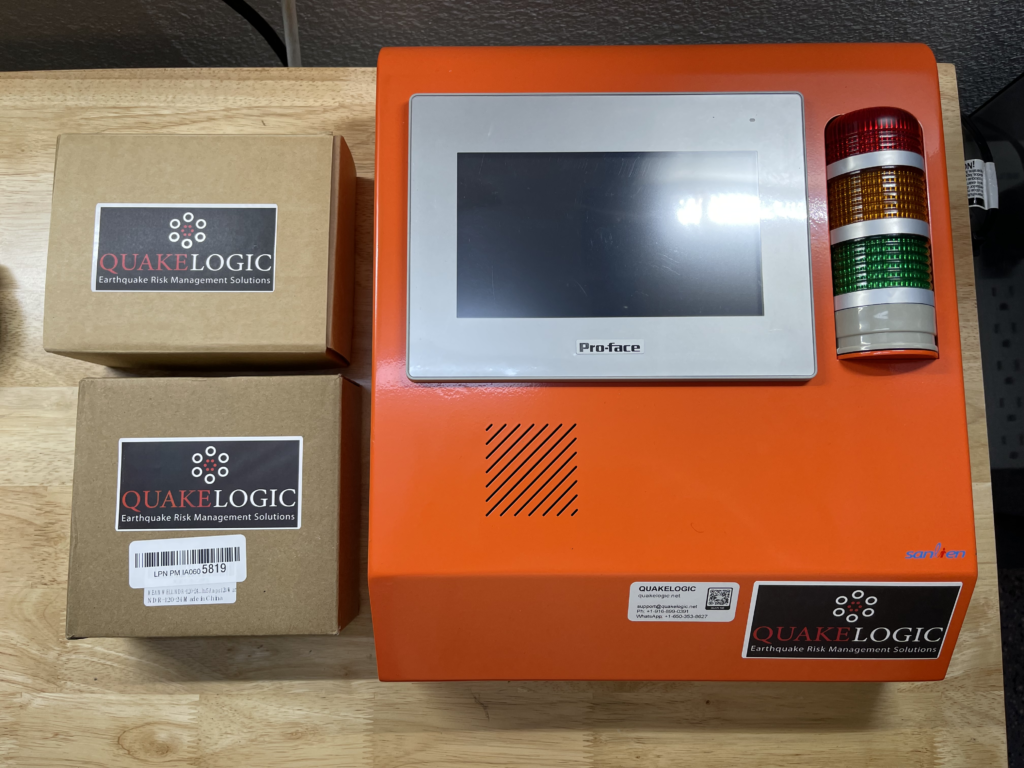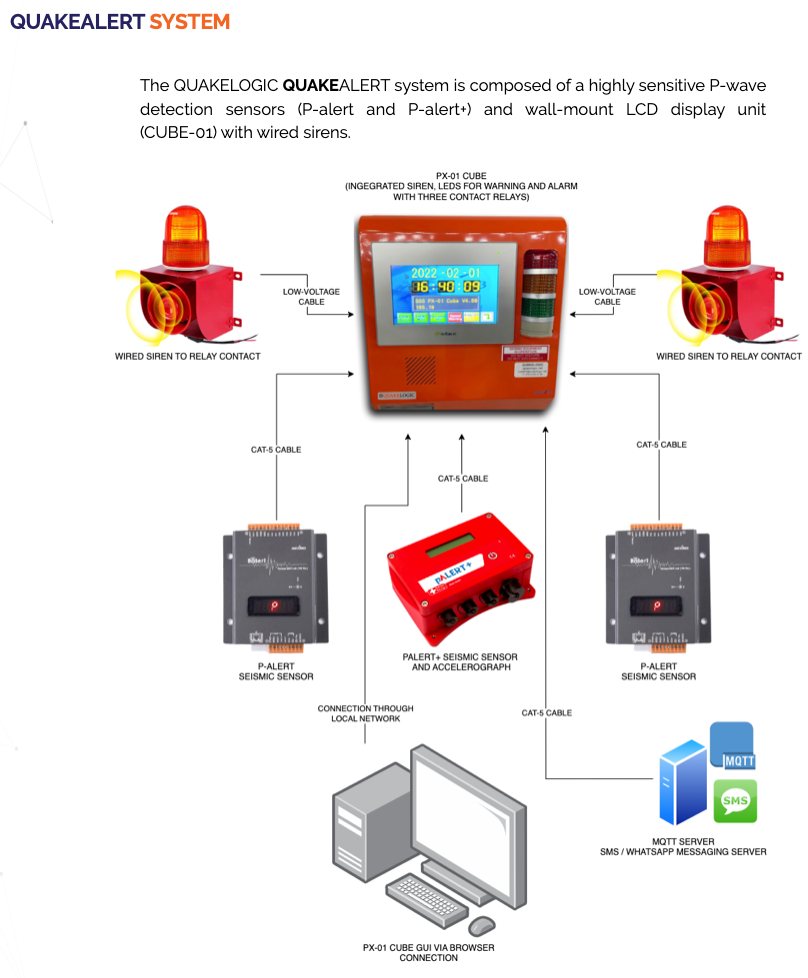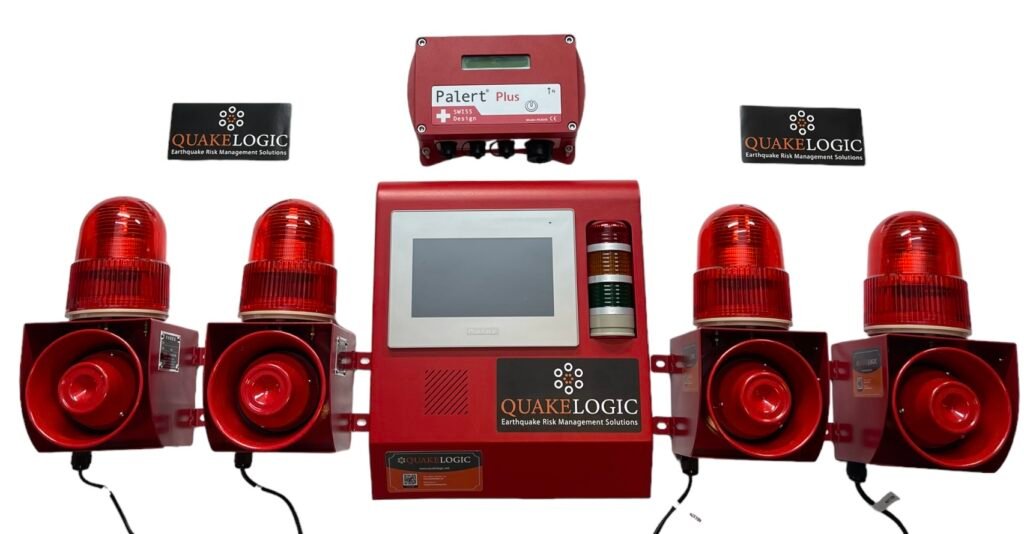In the heart of our bustling cities, lying within just 15 miles of urban settings, fault lines silently weave. Areas like the San Francisco Bay Area, Downtown Los Angeles and Istanbul sit precariously close to these seismic threats, making them vulnerable to the devastating impacts of earthquakes without a moment’s notice.
Traditional network-based earthquake early warning systems face a critical challenge in these ‘blind zones.’ The proximity to fault lines significantly reduces the time available to relay warnings, leaving little to no margin for preventative action. This is where QuakeLogic’s On-Site Earthquake Early Warning System becomes not just a necessity but a life-saving innovation.

Our cutting-edge technology offers a solution that ensures businesses, factories, and public spaces can automatically:
- Shut down critical equipment to prevent damage
- Alert individuals to ‘Drop, Cover, and Hold On’ for personal safety
- Open gates to facilitate emergency exits and rescue operations
By implementing QuakeLogic’s on-site system, you’re not just safeguarding your infrastructure and assets but, more importantly, the lives of those within your premises. Additionally, aligning with insurance requirements becomes streamlined, saving lives and minimizing downtime, ultimately leading to cost savings.

Don’t wait for the ground to shake to recognize the need for advanced preparations. Contact us at sales@quakelogic.net or visit our website https://www.quakelogic.net/earthquake-early-warning-products to learn more about how QuakeLogic can fortify your readiness against earthquakes.
🛡️ Together, let’s make safety a priority and ensure that when nature strikes, we’re prepared, not scared.
#EarthquakePreparedness #SafetyFirst #QuakeLogic #EarthquakeEarlyWarning #SanFrancisco #LosAngeles #ProtectYourBusiness




